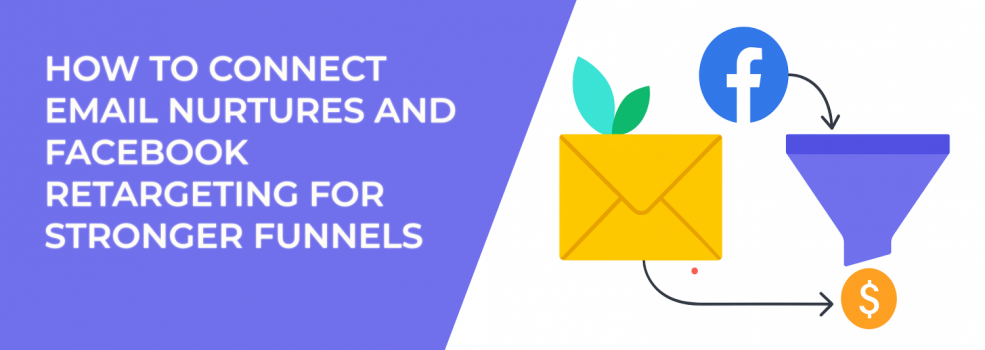Funnels are supposed to guide people step by step toward a purchase. In reality, though, customer journeys are rarely neat. Someone may sign up for your newsletter, skim one email, ignore the next three, then suddenly click on an ad weeks later. Others may binge your content in one go and still hesitate before making a decision.
That’s why marketers who combine email nurtures with Facebook retargeting build stronger funnels. By using both channels together, you cover blind spots, increase touchpoints, and give leads multiple chances to say “yes.”
Why You Can’t Rely on Email Alone
Email has been the backbone of digital marketing for decades. It’s cheap, trackable, and still delivers one of the highest ROIs among all channels. A well-crafted nurture sequence can:
-
Educate new leads about your product or service.
-
Build trust by sharing valuable tips, guides, and resources.
-
Slowly move people closer to a buying decision.
But here’s the challenge: inboxes are crowded. The average office worker receives over 100 emails a day. Even your most loyal subscribers will miss some of them.
Think about it — how many times have you intended to read a marketing email, only for it to get buried under dozens of others? That’s what happens to your audience, too.
This is why depending only on email nurtures is risky. Without reinforcement, many leads slip away.
How Facebook Retargeting Strengthens Funnels
Facebook retargeting ensures your brand stays visible, even when your emails don’t get opened. When people scroll through their feed, your ads can serve as reminders, nudges, or reinforcements of the messages you’ve already sent via email.
These ads can:
-
Reintroduce your product with a clear, eye-catching visual.
-
Reinforce the same benefits you highlighted in your nurture emails.
-
Give cold or distracted leads another chance to engage.
-
Highlight social proof, like testimonials or reviews, that support your email claims.
If you’re new to retargeting, check out our guide on how to set up Facebook retargeting.
When email and retargeting ads work in sync, you’re no longer relying on a single channel to do all the heavy lifting. Instead, you’re surrounding leads with consistent, relevant touchpoints that make them more likely to take action.
Step 1: Sync Your Email List with Facebook
The first step in connecting email nurtures and Facebook retargeting is syncing your email database with Facebook. You can do this manually, by uploading your list, or automatically through platforms like LeadEnforce.
Once connected, build custom audiences from different segments:
-
Engaged subscribers — people who regularly open and click your emails. These users are already warm, so your retargeting ads can push them toward a decision with product demos, free trials, or limited-time offers.
-
Cold subscribers — people who haven’t opened your emails for weeks or months. Retargeting gives you another shot with ads that reignite interest, like success stories or “see what’s new” messages.
-
High-value leads — people who signed up through specific channels (like a webinar or high-intent lead magnet). They’ve already shown strong interest, so your ads should focus on the next logical step, such as booking a call or viewing pricing.
If you’re unsure how to refine these audiences, take a look at Facebook Ad Targeting 101 for a breakdown of how to reach the right people.
Step 2: Keep Your Messaging Consistent
When emails and ads tell different stories, leads get confused. Consistency is key.
For example:
-
If your nurture email explains how your product saves time, run retargeting ads that show a quick video of how it works in action.
-
If you share a case study via email, use an ad to highlight the strongest result from that story.
-
If your emails are focused on education, use ads to highlight the practical next step — like a free trial or booking a demo.
The goal is recognition. A subscriber should immediately connect the dots between your email and your ad. That connection reinforces memory and strengthens trust.
Step 3: Use Retargeting to Adapt Timing
Emails follow a fixed schedule. Day one, day three, day five. But buyers don’t all move at the same pace. Some are ready to act after two touchpoints, while others need ten.
Retargeting allows you to adapt timing based on real behavior:
-
Clicked but didn’t convert: If someone clicks a product link in your email but doesn’t purchase, show them an ad within 24–48 hours that highlights testimonials, reviews, or a strong call-to-action.
-
Ignored multiple emails: If someone hasn’t opened three or more emails in a row, retarget them with a completely different angle, like a video or interactive content, to capture their attention.
-
Reached the end of a nurture series: If they’ve consumed your entire email sequence without converting, present them with a strong offer — a discount, free consultation, or exclusive bonus.
This dynamic timing ensures you don’t lose leads simply because they didn’t match your email calendar.
Step 4: Track, Measure, and Improve
Connecting channels is only valuable if you measure the results. Watch how emails and ads interact with each other. Some key metrics include:
-
Email performance — open rates, click-through rates, and unsubscribe rates.
-
Ad performance — impressions, engagement, and click-through rates.
-
Funnel results — conversions that happen after exposure to both email and ads.
Look for overlaps. Do conversions spike when retargeting ads run right after nurture emails? Does engagement increase when ad creatives mirror your email topics?
And don’t be afraid to test. Experiment with different subject lines, creative formats, and offers. Sometimes the smallest tweaks bring the biggest performance jumps. If you’ve been struggling with results, our guide on Facebook ads not converting and how to fix it will give you extra troubleshooting tips.
Advanced Tips for Stronger Funnels
Want to go beyond the basics? Try these tactics:
-
Use lookalike audiences: Build lookalikes of your engaged email subscribers to expand reach while staying relevant.
-
Segment by behavior: If someone downloads a pricing sheet, retarget them differently than someone who only read a blog post.
-
Combine with exclusions: Don’t waste money on ads for people who already converted. Exclude paying customers from your campaigns.
-
Leverage automation: Connect your CRM or email platform with Facebook so your audiences update in real time.
These strategies create even tighter alignment between your nurture campaigns and retargeting ads.
Final Thoughts
When you combine email nurtures with Facebook retargeting, your funnel transforms from a straight path into a dynamic system that adapts to how people actually behave. Emails build trust and provide depth. Ads reinforce the message and keep your brand visible.
Together, they make sure leads don’t slip through the cracks. Instead, they see you across multiple touchpoints, feel guided rather than pressured, and are more likely to take the final step.
The question is: are you giving your funnel the strength it needs, or are you letting good leads disappear because your channels aren’t working together?

